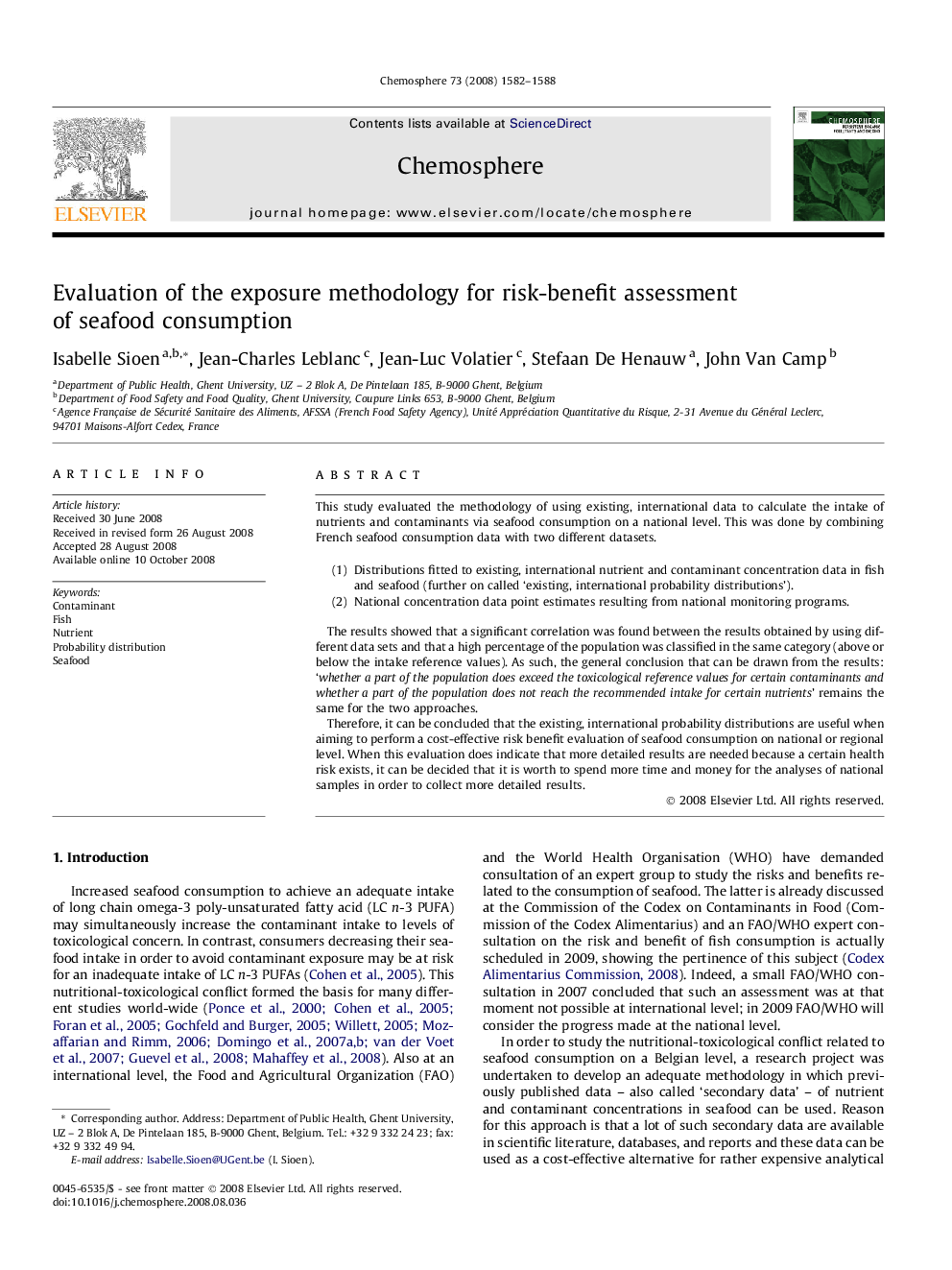| Article ID | Journal | Published Year | Pages | File Type |
|---|---|---|---|---|
| 4413389 | Chemosphere | 2008 | 7 Pages |
This study evaluated the methodology of using existing, international data to calculate the intake of nutrients and contaminants via seafood consumption on a national level. This was done by combining French seafood consumption data with two different datasets.(1)Distributions fitted to existing, international nutrient and contaminant concentration data in fish and seafood (further on called ‘existing, international probability distributions’).(2)National concentration data point estimates resulting from national monitoring programs.The results showed that a significant correlation was found between the results obtained by using different data sets and that a high percentage of the population was classified in the same category (above or below the intake reference values). As such, the general conclusion that can be drawn from the results: ‘whether a part of the population does exceed the toxicological reference values for certain contaminants and whether a part of the population does not reach the recommended intake for certain nutrients’ remains the same for the two approaches.Therefore, it can be concluded that the existing, international probability distributions are useful when aiming to perform a cost-effective risk benefit evaluation of seafood consumption on national or regional level. When this evaluation does indicate that more detailed results are needed because a certain health risk exists, it can be decided that it is worth to spend more time and money for the analyses of national samples in order to collect more detailed results.
